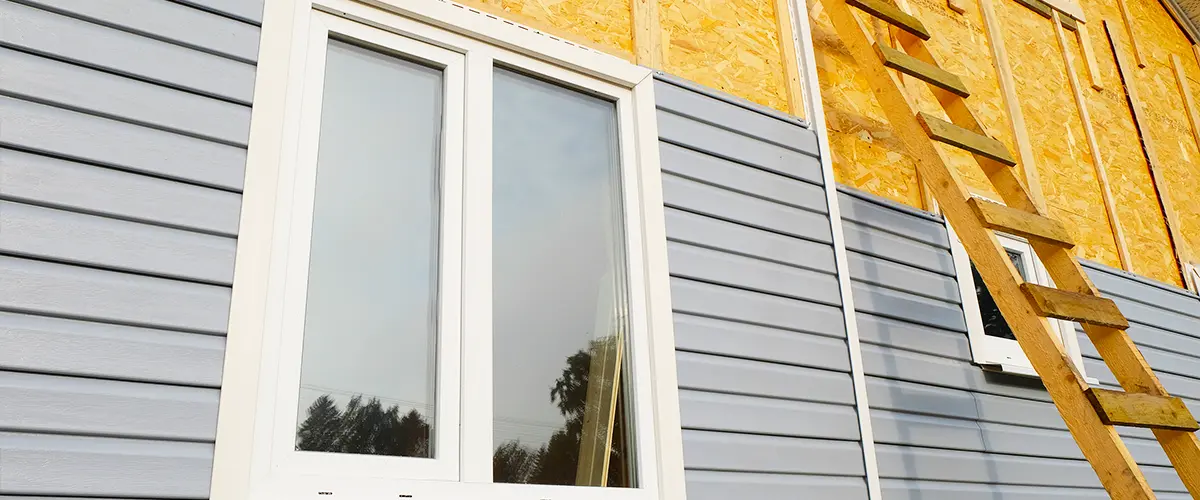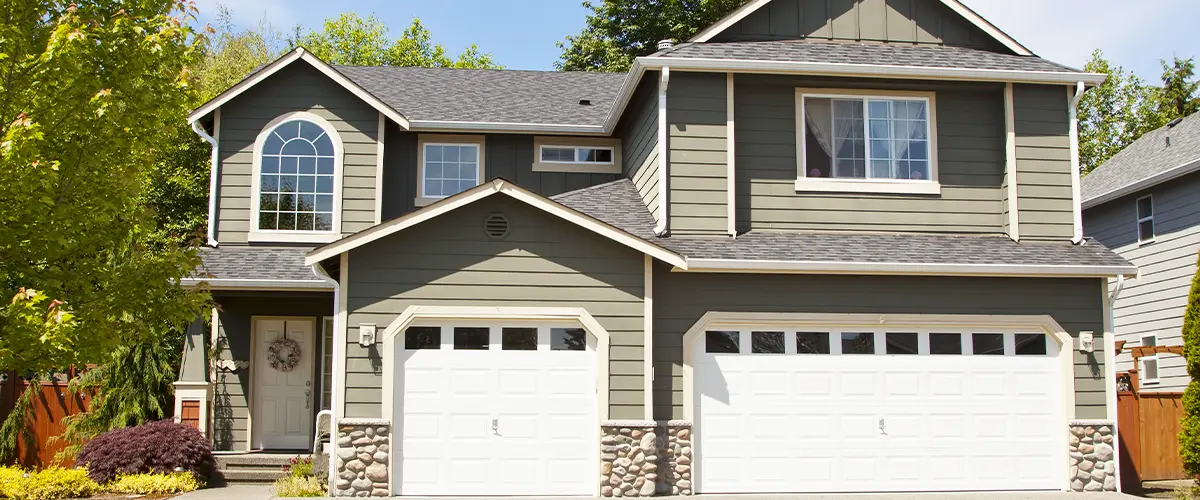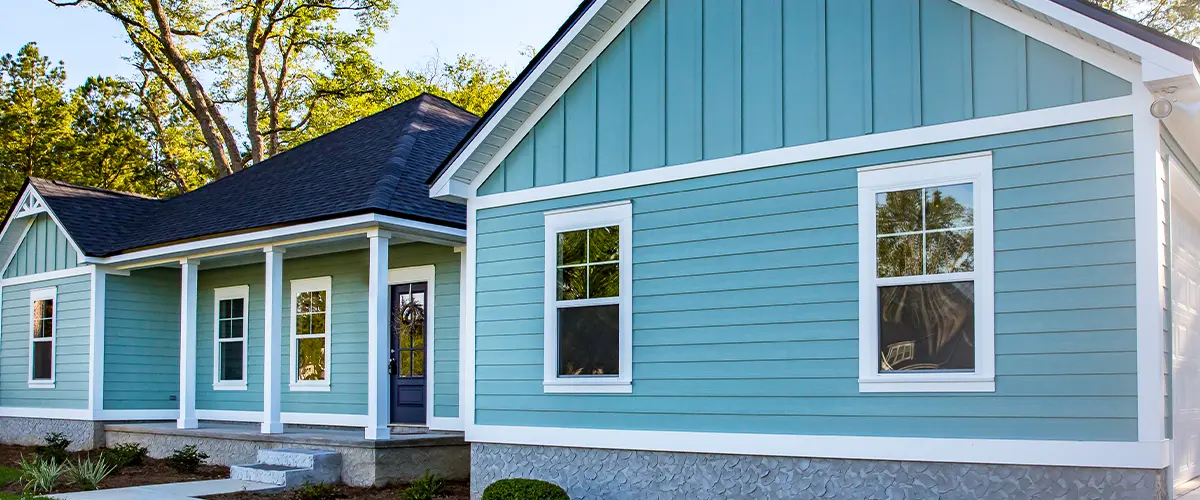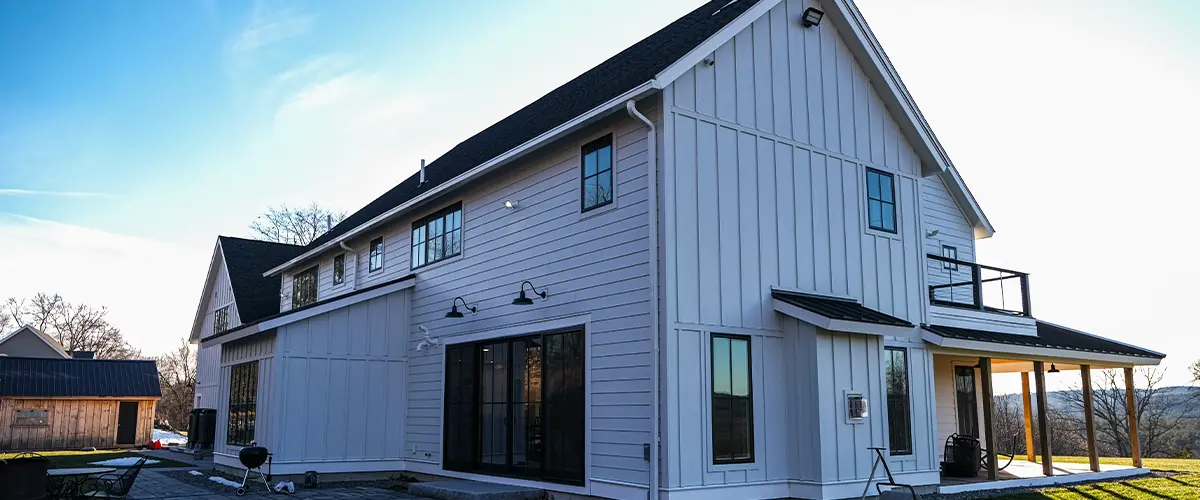Vinyl Vs James Hardie Siding
Choosing the right siding for your home is a big decision. James Hardie siding and vinyl siding are two popular options. This article will compare their durability, maintenance, looks, cost, and more to help you decide.
Keep reading to find out which is best for you.

Durability Comparison
Resistance to Weather and Pests
Vinyl and James Hardie siding both offer strong resistance to weather, but in different ways. Vinyl siding can handle high winds well. It’s made of polyvinyl chloride, which makes it durable against wind damage.
Yet, extreme temperatures can cause vinyl to crack or warp over time. On the other hand, James Hardie fiber cement siding stands up better to extreme heat and cold without damage.
Pests can be a big problem for some siding materials, but not so much for vinyl and Hardie board. Vinyl doesn’t appeal to pests like termites or carpenter ants because it’s not wood.
James Hardie products are also pest resistant due to their cement-like material composition.
Choosing between vinyl and James Hardie siding means considering how you want your home protected against the elements.
Longevity and Wear Over Time
Vinyl siding and James Hardie board siding are two popular choices for homeowners. Each has its own life span due to the materials they’re made from. Vinyl, a type of PVC, can last about 20-40 years before it needs replacing.
It keeps its color well but can get damaged by extreme weather or direct flame.
James Hardie siding, made from fiber cement products, has an impressive longevity of up to 50 years when properly maintained. This siding is fire retardant and resists damage from pests and harsh weather conditions better than vinyl.
Over time, Hardie board might need repainting to keep its fresh look.
The choice between these sidings affects how often you will need to repair or replace them in the future. Now, let’s consider what maintenance each type requires.

Maintenance Requirements
Vinyl Siding Maintenance
Keeping vinyl siding looking good is easy. You just need to clean it with a garden hose and some soap once in a while. This removes dirt and stops mold from growing. Unlike wood siding, vinyl does not need regular painting or staining.
It’s made to last long without much work.
Vinyl siding offers homeowners low maintenance and lasting beauty, making it a popular choice for new siding projects.
James Hardie Siding Maintenance
Maintaining James Hardie siding is relatively simple. Regularly cleaning the siding with a garden hose and a soft-bristle brush or cloth can help keep it looking fresh. It’s crucial to inspect for any damage, such as cracks or gaps, and promptly address them to prevent moisture from seeping underneath the siding.
Moreover, repainting every 15 years can renew its appearance and provide added protection against the elements, ensuring that it continues to enhance your home’s exterior.
When maintaining James Hardie siding, keep in mind to use mild soap and water when cleaning to avoid damaging the finish. Inspecting for any signs of wear and tear on an annual basis can help catch minor issues early before they escalate into larger problems requiring more extensive repairs.
By addressing maintenance tasks promptly, homeowners can ensure their James Hardie siding stays in top condition for many years to come.

Aesthetic Differences
Texture and Realism of Materials
The texture of James Hardie siding closely imitates the look and feel of real wood, providing an authentic appearance that adds depth and dimension to your home’s exterior. The deep embossing creates a natural, wood-like texture that enhances the curb appeal of your property.
In contrast, vinyl siding may lack the realistic texture and depth found in James Hardie siding, potentially affecting the overall aesthetics of your home. When considering texture and realism, James Hardie siding stands out for its ability to closely resemble traditional building materials while providing exceptional durability and longevity.
The deep texture featured in James Hardie siding gives it an advantage in terms of visual appeal, making it a popular choice among homeowners seeking a more advanced siding option.
Moreover, this attention to detail can contribute to boosting the resale value of your property. When evaluating siding materials based on their textural qualities, many homeowners find that James Hardie provides a worthwhile investment due to its ability to faithfully replicate the look and feel of natural materials while delivering outstanding performance over time.
Color and Style Options
Now let’s talk about the color and style options for vinyl and James Hardie siding. Vinyl siding comes in a wide range of colors, giving you lots of choices to match your home’s exterior.
It also offers different styles like shingles or vertical panels. On the other hand, James Hardie siding provides a variety of colors and textures to mimic wood, creating a more natural look for your home.
You can opt for horizontal or vertical panels according to your preference.
Ultimately, when considering color and style options, both vinyl and James Hardie sidings offer homeowners plenty of choices to enhance their homes’ curb appeal.

Cost Analysis
Initial Investment
The initial investment for vinyl siding is generally lower than James Hardie siding. Vinyl can cost around $6 to $8 per square foot, while the fiber cement board used in James Hardie siding can range from $10 to $12 per square foot.
Keep in mind that these prices vary based on factors like your location and the complexity of installation. Labor costs for James Hardie are usually higher due to its heavier weight and the specialized tools required for cutting and handling.
On top of that, consider long-term value alongside upfront costs – James Hardie’s durability might save you more in maintenance expenses over time.
In terms of energy efficiency, both materials have their unique advantages. Vinyl has insulation options like foam sheathing which helps with heat retention, while James Hardie’s cement-like materials offer fire-resistant properties and solid support against extreme weather conditions.
Long-Term Value
When considering the long-term value of siding materials, it’s crucial to assess their durability and maintenance needs. James Hardie siding, made from cement-like materials, is known for its exceptional longevity, with a warranty that can range up to 30 years.
This makes it a sound investment for homeowners looking for a durable and fire-resistant option. On the other hand, vinyl siding also offers good value over time due to its low maintenance requirements and resistance to pests and weather damage.
Both options provide lasting value in different ways – James Hardie through longevity and durability, while vinyl offers cost-effective upkeep.
In terms of long-term value, James Hardie may require less frequent repairs or replacements compared to vinyl siding due to its robust nature. However, the initial investment for James Hardie is typically higher than that of vinyl siding.
Homeowners must weigh these factors against their budget and preferences when making a decision about which material will provide the best long-term value for their home.
Top Manufacturers of Siding Materials
- James Hardie: A leading name in fiber cement siding, known for innovative products, sustainability focus, and exceptional warranties.
- CertainTeed: Renowned for offering diverse, high-quality siding options, including vinyl and fiber cement, with excellent aesthetic choices.
- LP SmartSide: Specializes in engineered wood siding, providing durable, impact-resistant materials with an appealing natural wood appearance.
- Alside: Offers affordable, efficient siding solutions, particularly in vinyl, combining energy-saving features with modern design flexibility.

Frequently Asked Questions - Vinyl vs James Hardie Siding
Trust Our Experienced Team
Our team has been delivering top-quality siding services for years, ensuring professional results. Work with the best to save money long-term. Contact us at (402) 651-1493 to get started today!
